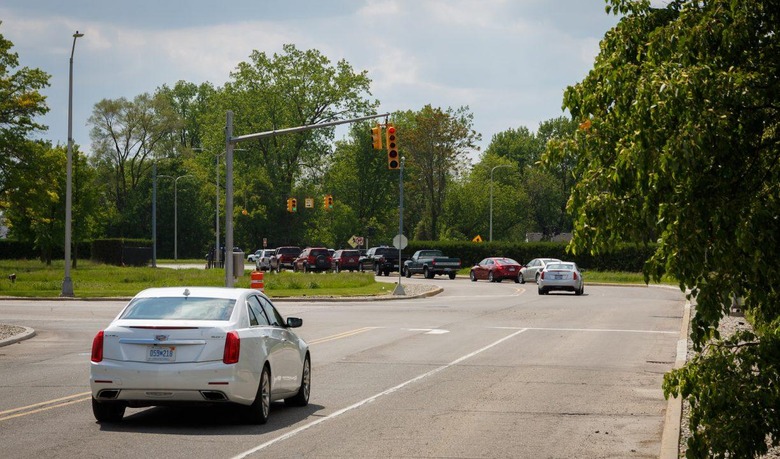Cadillac is testing V2I cars that talk to traffic lights
Cadillac has given its CTS luxury sedan the ability to chat with traffic lights, though the Vehicle-to-Infrastructure (V2I) technology isn't yet on production vehicles. Instead, the automaker has been carrying out trials on cars that can communicate with city infrastructure, more specifically getting information on when the lights are likely to change. That data, Cadillac says, could make urban driving both safer and less stressful.
For the trial, Cadillac fitted traffic signals near its GM Warren Technical Center campus with radios that could communicate with the hardware built into the model year 2017 CTS sedan. That already has support for the Dedicated Short-Range Communications (DSRC) protocol, thanks to the automaker's decision to launch Vehicle-to-Vehicle (V2V) communications on the car.
Currently, 2017 CTS that come with range of each other are able to communicate their speed and heading. The ad-hoc wireless network, which has a range of around 1,000 feet, allows the cars to exchange information on things like sudden braking or evasive maneuvers, even if the two vehicles don't have line-of-sight visibility. Now, DSRC is being used to communicate with infrastructure too.

Specifically, the cars were informed whether they were likely to run a red light. By comparing the car's current speed to the timing of an upcoming signal change, the system can warn the driver if they're likely to reach the lights when they've turned red. "This alert helps avoid the dangerous decision to either brake abruptly or accelerate through a busy intersection," Cadillac suggests.
Perhaps equally important to privacy advocates, there's no transmission of personally-identifying information from the car to the lights. Without a VIN number, car registration, or network MAC address, there's no way to identify which CTS actually went through the junction. So, even if you don't heed the warning and still run through the red light, while the traffic signal might recognize that has happened, it won't be able to say what vehicle was responsible.
Firewalls, meanwhile, help prevent anybody with nefarious intentions from interfering with the communications between the infrastructure and the cars. The project has been run in collaboration with the Michigan Department of Transportation and Macomb Country Department of Roads, as the potential for V2I in increasing urban efficiency and safety are explored.
It's not the first time we've seen communicative traffic signals, mind. Audi launched its Traffic Light Information (TFI) system in Las Vegas, NV, late in 2016. As we found when we tested it out, compatible cars – which includes the A4 and Q5, Q7, A4 all road, A5 and S5 Sportback, and the SQ5 – get a simple countdown graphic on the dashboard to show how soon the lights ahead will change from red to green, or vice-versa.
Although billed as a convenience feature now, both examples of V2I could have significant impact on how city councils and traffic management organizations handle rush hour. Audi, for instance, intends to feed anonymized vehicle movement data back to the city, opening the door to greater insights about traffic patterns. Cars could even tie economy features like their engine stop/start systems into the anticipated patterns of signals, only powering the car back up just ahead of the lights going green.
